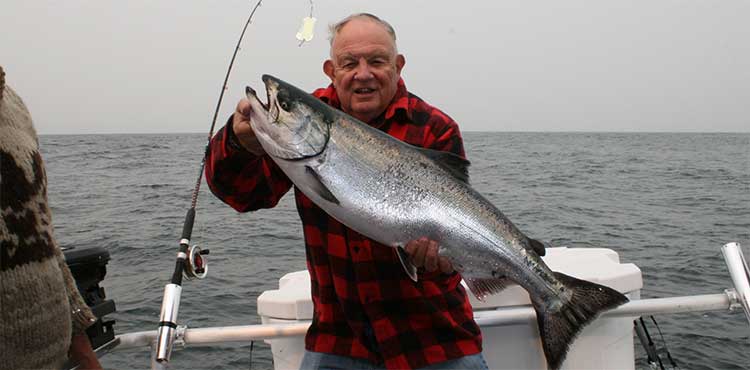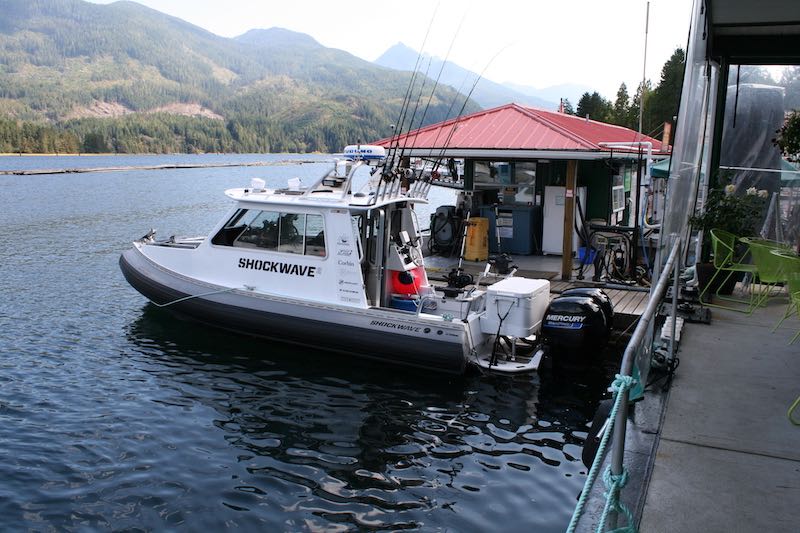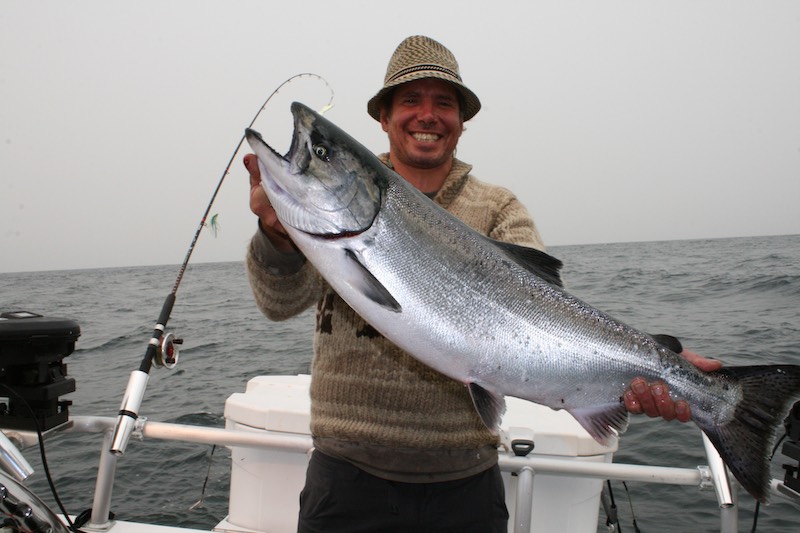
2019 marks my 30th anniversary as an outdoor writer, so when I say this was my best trip ever, please know that I’ve been on more than 500 great fishing trips. This was my sixth trip driving into Tahsis, northwest of Campbell River on beautiful Vancouver Island. My fishing partner Harry Knoff and I had driven from our homes in Vernon, BC the day before and were waiting for our guide on the docks of the marina when marina owner John Falavolito walked up telling us he had some bad news and some good news. The bad news was that our assigned guide had been ill during the night and couldn’t work that day. The good news was that Tyler Hunt, owner of the Shockwave, had readily agreed to give up his day off and take us out.
It didn’t take the Shockwave long to approach Tyler’s favourite halibut hole, located 26 nautical miles offshore from the mouth of Esperanza Inlet. He tied a mesh chum bag loaded with the previous day’s salmon heads and entrails to the top of his anchor chain and quickly had the boat securely anchored to the bottom some 100 metres (325 ft) below. Harry and I both hooked up within a half-minute of our baits hitting the bottom. My halibut was big and even peeled some of the heavy line off the drag before I got it up from the bottom. Harry’s first fish turned out to be about an 11.4-kg (25-lb) lingcod, a surprise bonus fish. My halibut was too big under the size regulations and had to be released. Within the hour we caught and released three over-sized halibut, and we retained three big lings and two halibut that were nearly identical at about 20.9 kg (46-lb) each.
While Tyler pulled and stowed the anchor gear, Harry and I took time to look around. We were out of sight of land, but the waters around us were totally teeming with life. Bait was skittering through the waves, chased by salmon and several pairs of Pacific white-sided dolphins from below and clouds of sea-birds from above. Not far from us, several whales were breaching and putting on an awesome show.
Tyler set one of his big motors to trolling speed and dropped a flasher-and-spoon combination back about 10 metres (22 ft), and a nice coho salmon hit the spoon before he could hook the line in the downrigger clip. Harry picked up the rod, and after his coho put on a show with a plethora of wild jumps and cartwheels, fought the coho in next to the boat where Tyler determined that it wasn’t hatchery marked and pulled the barbless hook without netting it. He explained that when fishing offshore, all wild coho had to be released. Within a few minutes we had our first double-header; both salmon were hatchery marked, so Tyler put them into the ice box along with our bottom fish. Then we released all of our salmon for another half-hour before I hooked one that instantly peeled line off the drag; all three of us knew it had to be a nice sized Chinook. While I fought it, Harry also hooked up, and we fought our first Chinook of the trip as a double-header. They both turned out to be beautiful Chinook in the mid-twenties, and Tyler put them in the box and made sure that we filled in the proper sections on our licenses.
By noon both Harry and I had fought and released more that 20 salmon each. Most were coho, but about a quarter of them had been Chinook salmon between 15 and 25 lbs. Tyler seemed amazed that a pair of anglers well over 70 years old were still jumping for the rods, but he figured that we needed a rest—and he was right. He put the gear down after our next pair of fish, and instead insisted that we sit down and rest while we ate our lunches and drank plenty of water to renew our energy.
After a half-hour break we went right back to work. When Tyler got time to hook the line to the downrigger clip, he would literally let the downrigger weight free fall to about 61 m (200 ft), where he’d usually set them at depths of 239 ft and 219 ft. We kept hitting both wild and hatchery-marked coho, as well as another half-dozen Chinook. By three in the afternoon Tyler had let us retain one more coho and one more Chinook each to fill out daily limits. Between the comfort of the Shockwave and the fresh air and the constant excitement of the day, both Harry and I fell asleep while motoring back to Tahsis through the constant ocean rollers.
While Tyler filleted and bagged all of our fish, Harry and I agreed that it had indeed been the absolute best fishing day ever for both of us. The work done in the past few years by both the locals and the hatcheries in the Nootka and Esperanza inlets was obviously paying off big time. We had both boated larger fish in our long lifetimes, but neither of us had even dreamed of catching that many fish in the same day.
Visit the Store
$34.99
$34.99
Featured Catch

Joel Unickow halibut (Photo: Rob Frawley Lucky Strike Sportfishing Tofino)









